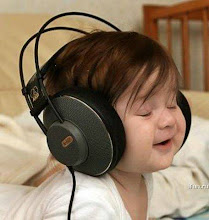Pink Floyd's The Piper at the Gates of Dawn
Today I want to talk about an interesting album I got from the library last week-Pink Floyd’s The Piper at the Gates of Dawn. As you may or may not know, Pink Floyd’s music was one of the staples of my childhood musical diet. But that was their later period of output: classics like Wish You Were Here, Dark Side of the Moon and The Wall.The Piper at the Gates of Dawn is their first album and I had never heard it before. (I had heard some of their earlier music on the compilation Works, but was really only familiar with the story of the original incarnation of the band--lead singer and visionary Syd Barrett goes insane and is replaced by David Gilmour.) Basically the first album is a document of a different band than the one I had grown up with.
The year was 1967, the big pop-art-weirdness album of the year was The Beatles’ Sgt. Pepper. But I gotta tell you, for psychedelic weirdness, Pepper doesn’t hold a candle to this album. There were still some conventions that The Beatles, (or Paul McCartney), were not willing to slough off-- regular time with a backbeat and regular phrase lengths, harmonic motion that was not jarring, lyrics that “made sense” in at least a general way…
But the 1967 version of Pink Floyd was less polished and had much less to lose as they created this circus of sounds. I’m pretty sure that Syd Barrett was the captain of the ship at this time, since the sound of the band changed fairly drastically after he was booted out.
I’m really at a loss to describe to you what I mean when I say this music is “psychedelic.” There just aren’t that many well-known reference points. I mean, Jimi Hendrix was considered psychedelic, but he had blues-based rock and some pop sensibility to hang on to, not to mention cool clothes with fringe. Even later Pink Floyd is described that way, but their lush, laid-back, chill-out and get-high vibe is pretty much the opposite of this album. Frank Zappa’s Freak Out!, which came out the year before is a pretty good comparison, although the music on that album goes simultaneously further “out there,” (“Help I’m a Rock,” and “It Can’t Happen Here), and more conventional, (pretty much the first side.)
There’s something so British about the sounds on this album. It’s the sound of English school boys, grown-up a little bit, at play. Or is it at work? That’s the predicament I found myself in as I tried to suss out what the band was attempting. Is it tongue-in-cheek or is this really what comes out when they try to create “art?” Can you really sing quirky little melodies about your bike and still have it be considered “art?” I don’t know.
But overall I found the music to be more humorous, (even if unintentionally), than great art. I hear this music and I can pinpoint it to a particular region and time. It’s that specific of an aesthetic.
And that, to me, is humorous for some reason.


0 Comments:
Post a Comment
<< Home